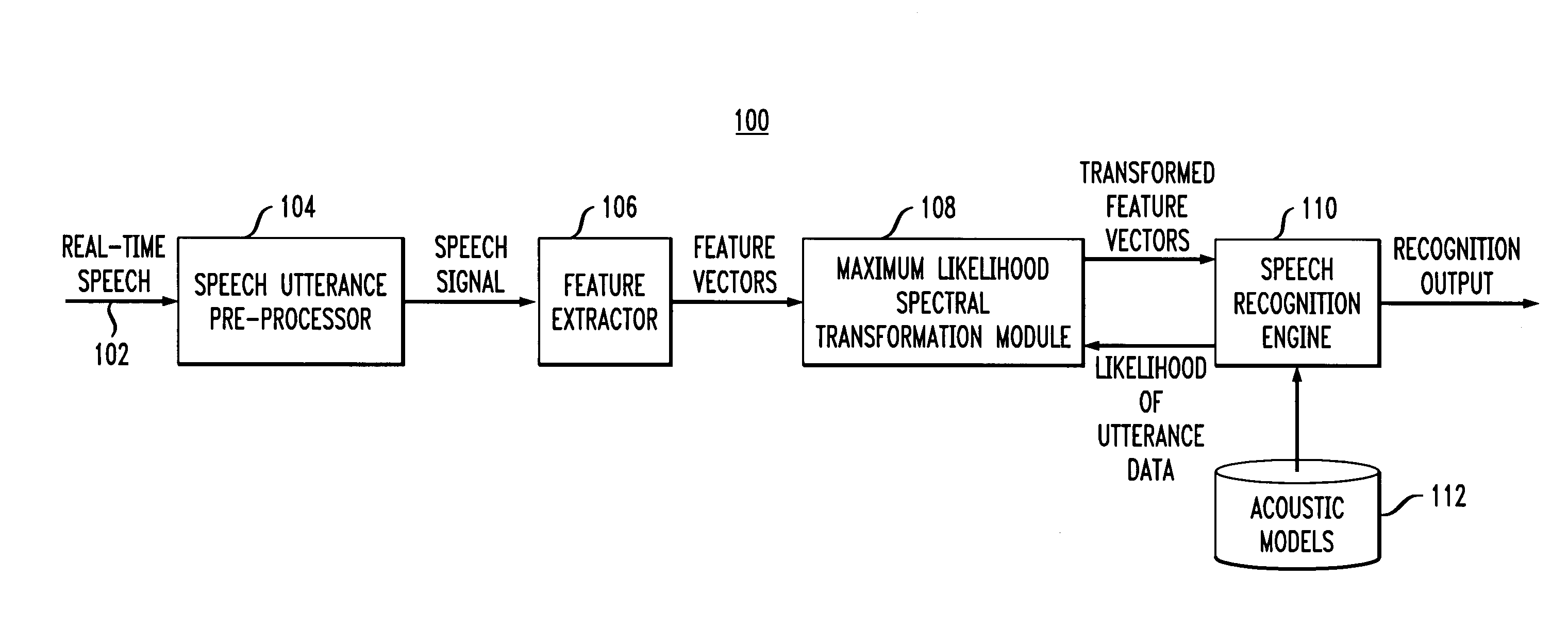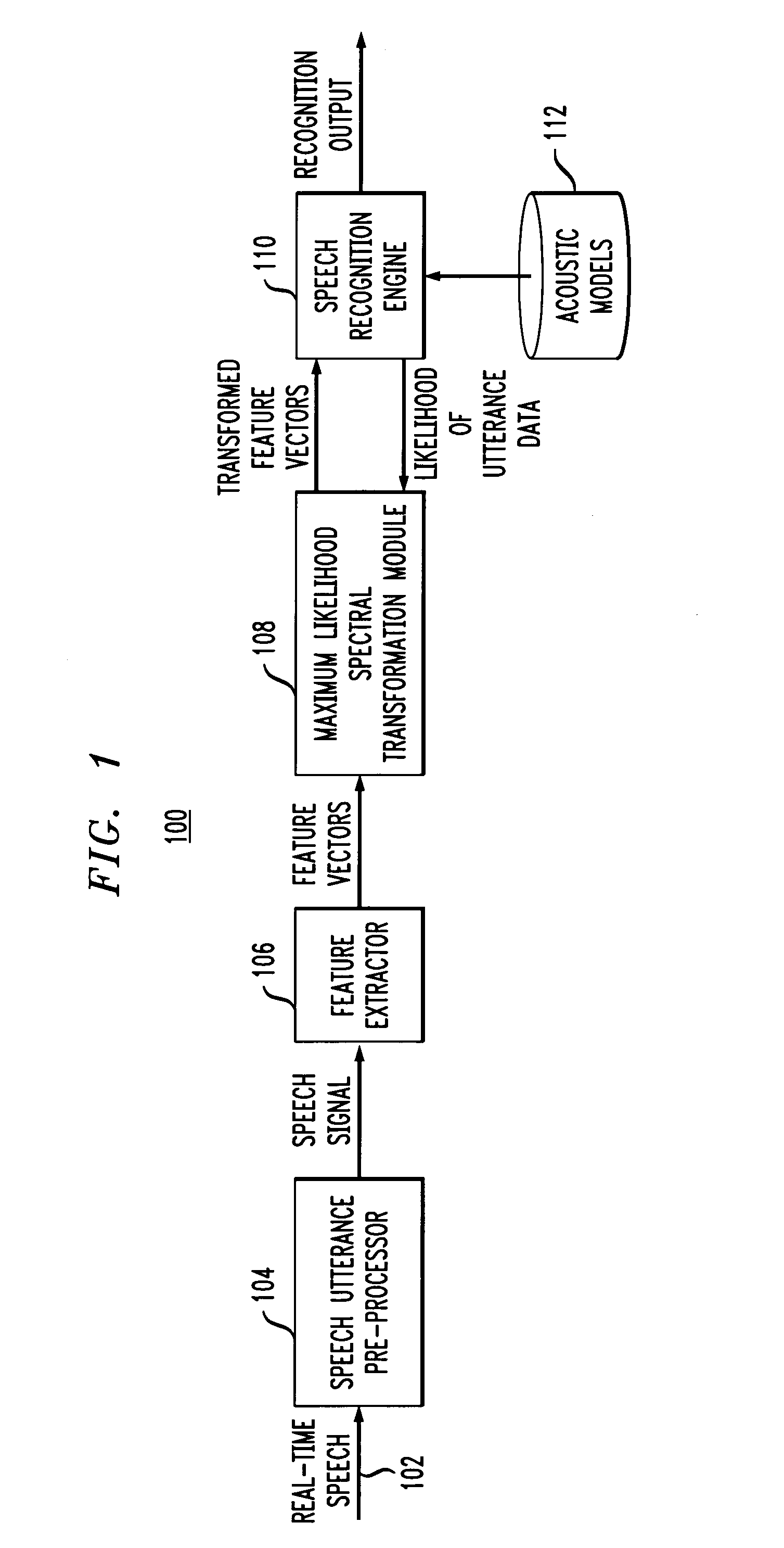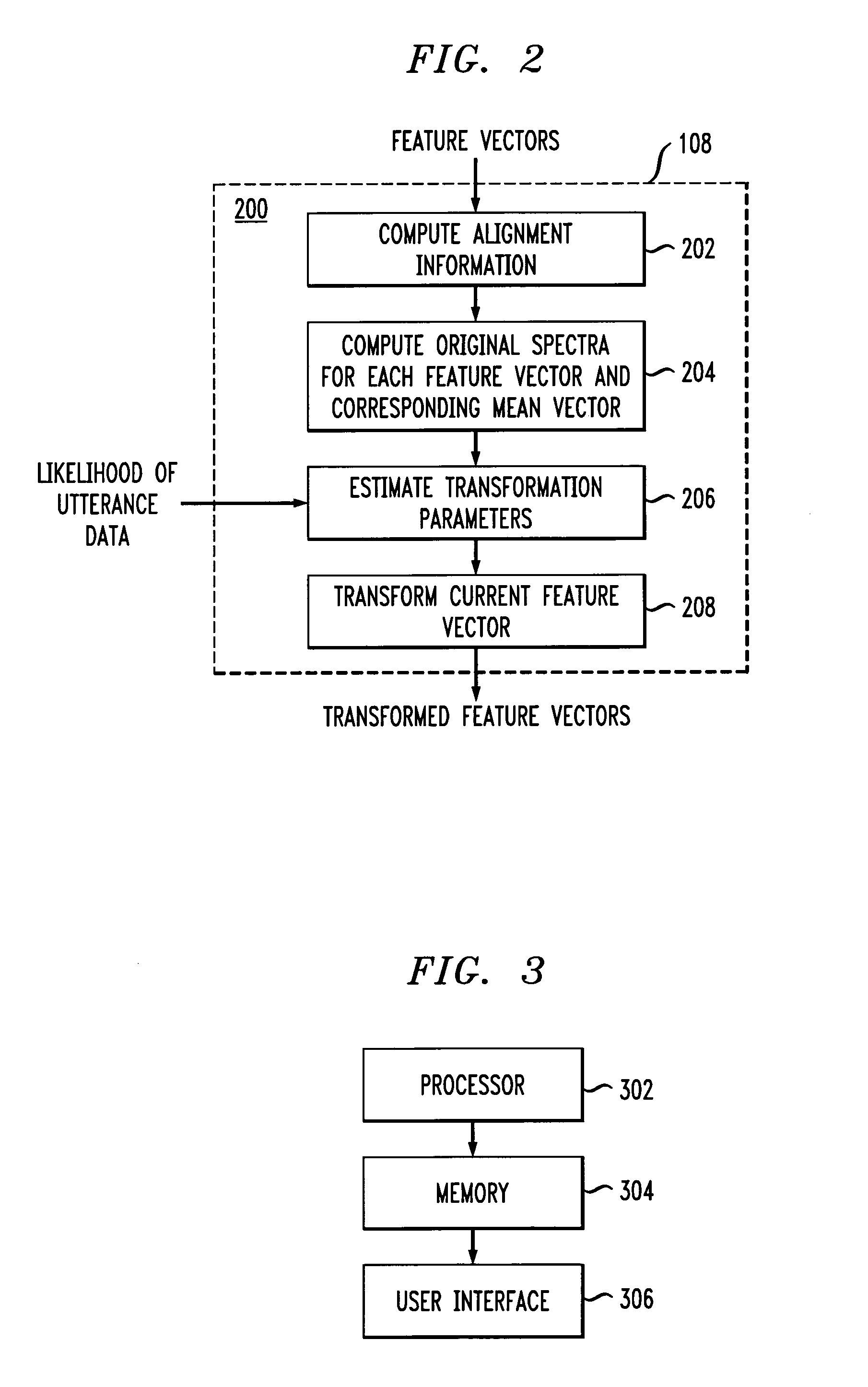Unsupervised incremental adaptation using maximum likelihood spectral transformation
an incremental adaptation and maximum likelihood technology, applied in the field of speech recognition systems, can solve the problems of not being suitable for incremental online adaptation, obtaining adaptation data is expensive at least in data collection, and the accuracy of such speech recognizers is typically significantly reduced when used in unknown operating environments
- Summary
- Abstract
- Description
- Claims
- Application Information
AI Technical Summary
Benefits of technology
Problems solved by technology
Method used
Image
Examples
Embodiment Construction
[0014]The present invention will be described herein in the context of an illustrative continuous speech recognition system. It is to be understood, however, that the present invention is not limited to this or any particular speech recognition system. In fact, the invention may not be limited to speech applications. Rather, the invention has wide applicability to any suitable pattern recognition system in which it is desirable to realize increased matching performance via improved feature space transformation based adaptation techniques. By way of example only, generalized speech recognition systems such as the commercially available large vocabulary IBM ViaVoice or ViaVoice Gold systems (trademarks of IBM Corporation of Armonk, N.Y.) may be adapted to permit and / or perform feature space transformation in accordance with the present invention.
[0015]Referring initially to FIG. 1, a block diagram of an illustrative continuous speech recognition system 100 employing maximum likelihood...
PUM
 Login to View More
Login to View More Abstract
Description
Claims
Application Information
 Login to View More
Login to View More - R&D
- Intellectual Property
- Life Sciences
- Materials
- Tech Scout
- Unparalleled Data Quality
- Higher Quality Content
- 60% Fewer Hallucinations
Browse by: Latest US Patents, China's latest patents, Technical Efficacy Thesaurus, Application Domain, Technology Topic, Popular Technical Reports.
© 2025 PatSnap. All rights reserved.Legal|Privacy policy|Modern Slavery Act Transparency Statement|Sitemap|About US| Contact US: help@patsnap.com



